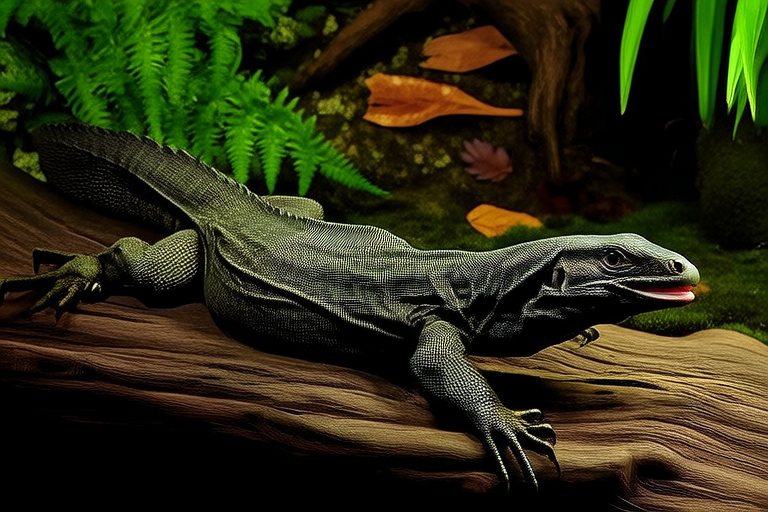From Jungle to Home: How to Successfully Own a Water Monitor Pet
Welcome to the world of water monitor ownership! These incredible creatures, native to Southeast Asia, offer a unique and rewarding experience for those willing to commit to their care. This comprehensive guide will walk you through everything you need to know about owning a water monitor, from setting up the perfect habitat to understanding their dietary needs and health concerns.
Introduction to Water Monitors
Water monitors (Varanus salvator) are among the largest lizards in the world, capable of growing up to seven feet long. They are highly intelligent and active, requiring spacious enclosures and specific environmental conditions to thrive. Their natural habitats include forests, swamps, and riverbanks, where they spend much of their time swimming and exploring.
Habitat Setup
Enclosure Size
The first step in providing a suitable home for your water monitor is ensuring it has enough space. Juveniles can start in a 4′ x 2′ enclosure, but adults require significantly larger areas—upwards of 8′ x 6′. Remember, these lizards grow rapidly and will quickly outgrow smaller tanks.
Lighting
Proper lighting is crucial for maintaining a healthy circadian rhythm. UVB lights are essential for calcium metabolism and vitamin D3 production. Install full-spectrum UVB bulbs that cover at least 75% of the enclosure. Replace these bulbs every six months or according to manufacturer guidelines.
Temperature and Humidity
Maintaining appropriate temperatures and humidity levels is vital for water monitors. Use thermometers and hygrometers to monitor these parameters. The basking area should reach between 95-100°F, while the cooler side remains around 80°F. Maintain humidity between 60-80%, using misters or humidifiers as needed.
Diet and Feeding
Water monitors are carnivorous and require a varied diet rich in protein. Feed them appropriately sized prey items such as mice, fish, insects, and occasionally eggs. Juveniles eat daily, whereas adults can be fed every two to three days. Avoid overfeeding, which can lead to obesity and related health issues.
Handling and Socialization Tips
While water monitors can become accustomed to handling, patience and consistency are key. Start with short sessions and gradually increase duration as your lizard becomes more comfortable. Always handle them gently and support their body fully. Never grab them by the tail, as this can cause injury.
Health Concerns
Regular veterinary check-ups are essential for early detection of potential health issues. Common problems include metabolic bone disease due to improper nutrition or insufficient UVB exposure. Signs include lethargy, swollen limbs, and difficulty moving. Prompt treatment is necessary.
Legal Considerations
Before acquiring a water monitor, research local regulations regarding exotic pet ownership. Some regions prohibit or heavily restrict certain species. Ensure compliance with all laws to avoid legal troubles.
Advice for New Owners
Owning a water monitor comes with significant responsibilities. Be prepared for the commitment involved in caring for these large, complex animals. Research thoroughly before making any decisions. Join online communities or forums dedicated to water monitor enthusiasts for additional support and advice.
In conclusion, successfully owning a water monitor involves creating an enriching environment, providing balanced nutrition, and addressing health concerns proactively. With dedication and knowledge, you can enjoy a fulfilling relationship with one of nature’s most fascinating creatures.
